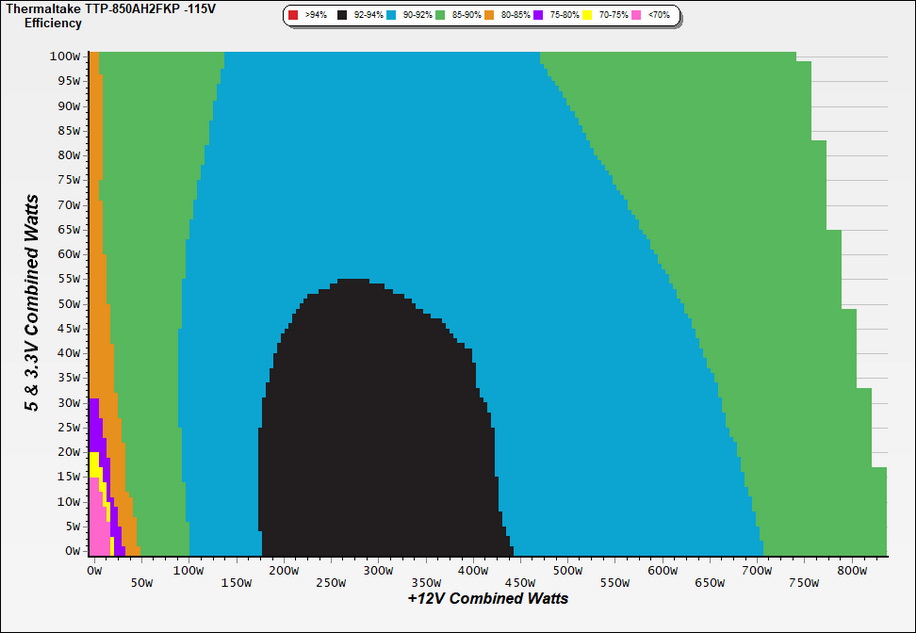Why you can trust Tom's Hardware
Protection Features
Check out our PSUs 101 article to learn more about PSU protection features.
|
Protection Features | Row 0 - Cell 1 |
|
OCP | 12V: 97.6A (139.43%), 11.966V 5V: 27.5A (137.5%), 5.018V 3.3V: 32A (160%), 3.234V 5VSB: 5.2A (208%), 4.804V |
|
OPP |
1160.4W (136.52%) |
|
OTP |
✓ (110°C @ 12V Heat Sink) |
|
SCP | 12V to Earth: ✓ 5V to Earth: ✓ 3.3V to Earth: ✓ 5VSB to Earth: ✓ -12V to Earth: ✓ |
|
PWR_OK | Proper operation |
|
NLO |
✓ |
|
SIP | Surge: - Inrush: NTC Thermistor & Bypass Relay |
The OCP triggering points are set high in all rails, especially at 12V and 3.3V. The same goes for OPP, which allows the PSU to deliver 1160W before it shuts it down. Under normal temperatures, such high OCP and OPP triggering points might not cause any trouble, but this won't be the case for operating temperatures exceeding 40 degrees Celsius. This is why we suggest within 130% OCP and OPP triggering points, given that the PSU's platform can handle the load, of course.
It is a shame that HKC didn't install an MOV in this platform. This inexpensive component can save the PSU and your system in case of a high voltage surge.
DC Power Sequencing
According to Intel’s most recent Power Supply Design Guide (revision 1.4), the +12V and 5V outputs must be equal to or greater than the 3.3V rail at all times.
Unfortunately, Intel doesn't mention why it is so important to always keep the 3.3V rail's voltage lower than the levels of the other two outputs.
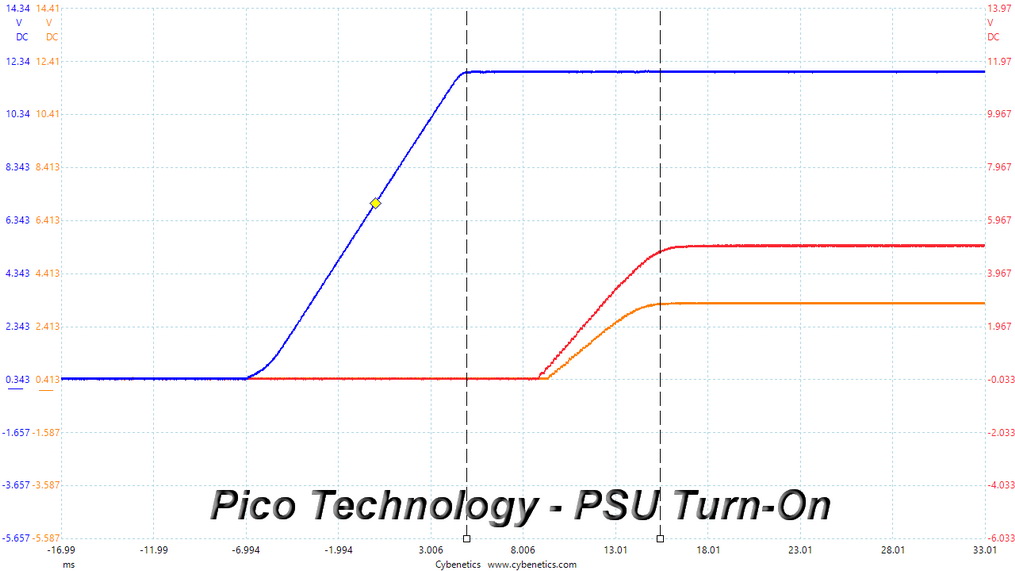
DC Power Sequencing Scope Shots
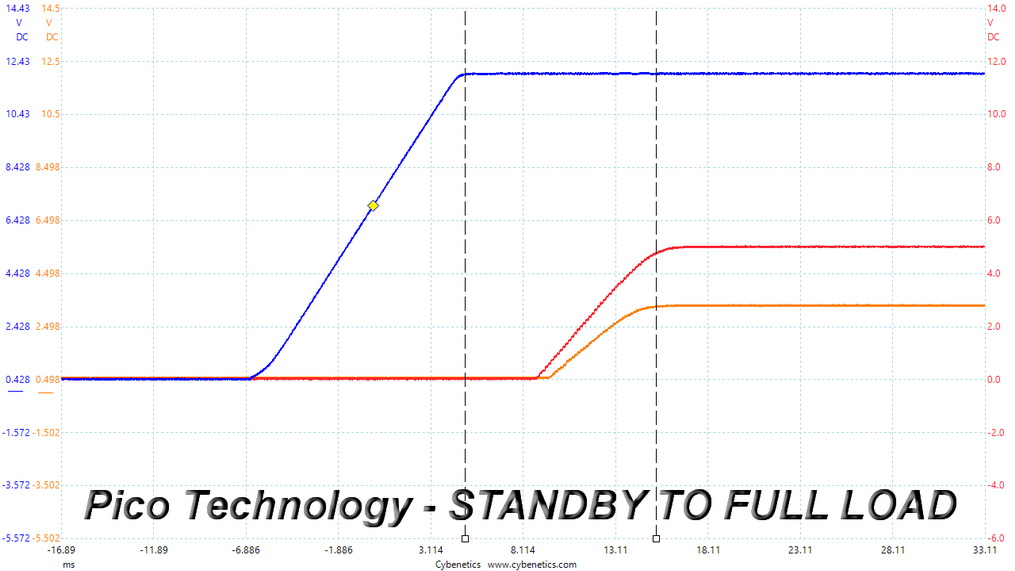
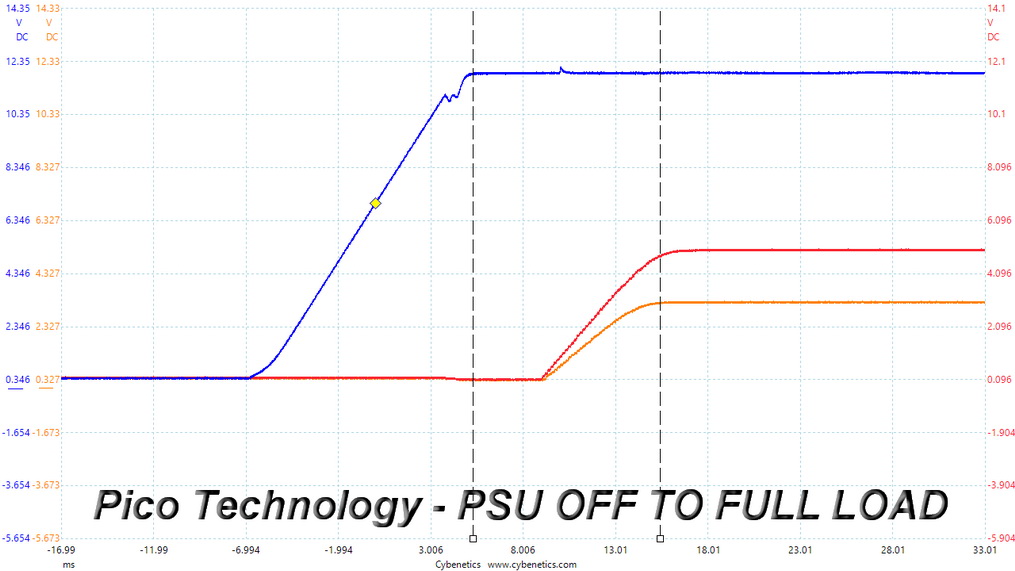
There are no problems here since the 3.3V rail is always lower than the other two.
Cross Load Tests
To generate the following charts, we set our loaders to auto mode through custom-made software before trying more than 25,000 possible load combinations with the +12V, 5V, and 3.3V rails. The deviations in each of the charts below are calculated by taking the nominal values of the rails (12V, 5V, and 3.3V) as point zero. The ambient temperature during testing was between 30 to 32 degrees Celsius (86 to 89.6 degrees Fahrenheit).
Get Tom's Hardware's best news and in-depth reviews, straight to your inbox.
Load Regulation Charts
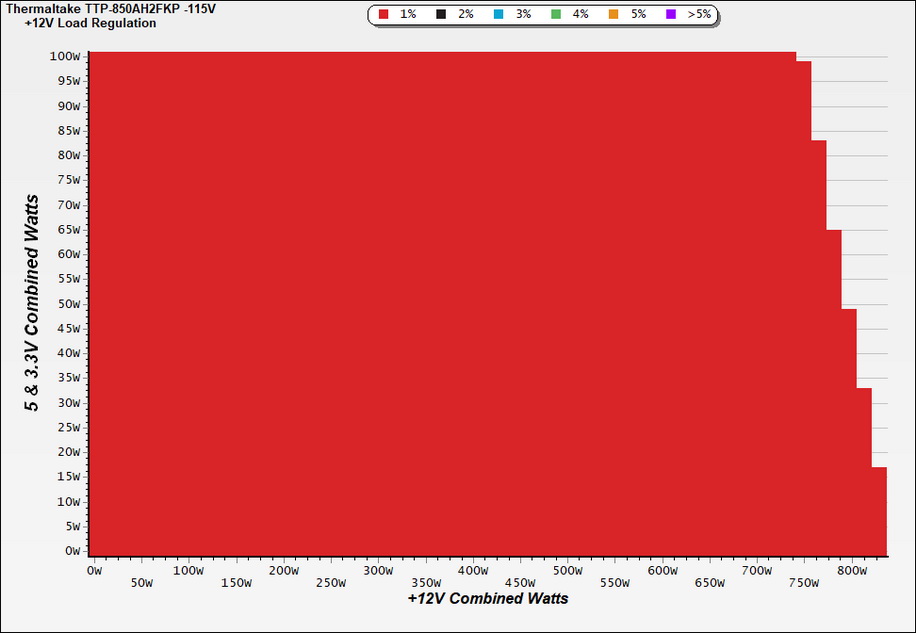
Load Regulation Charts

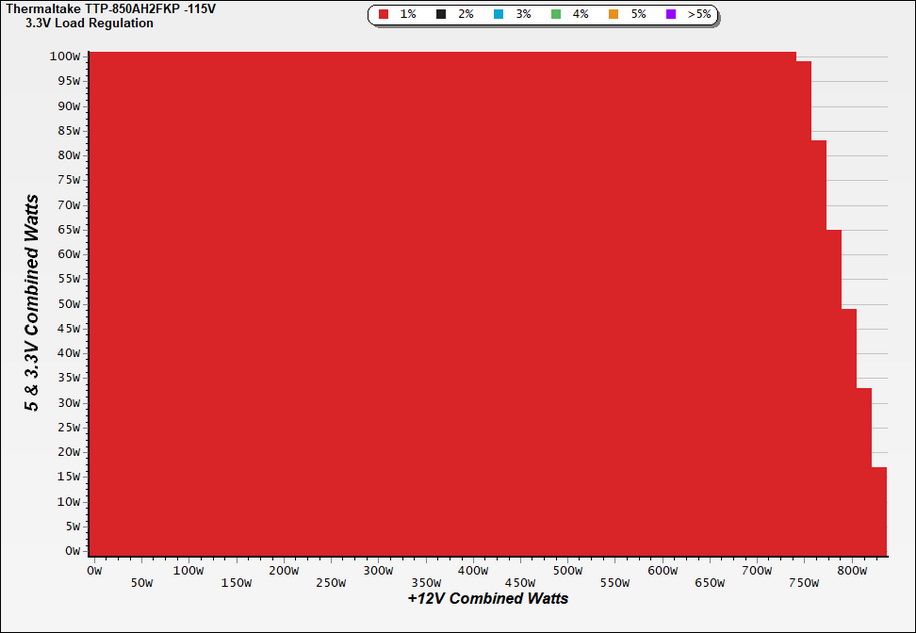
Efficiency Chart
Ripple Charts
The lower the power supply's ripple, the more stable the system will be and less stress will also be applied to its components.
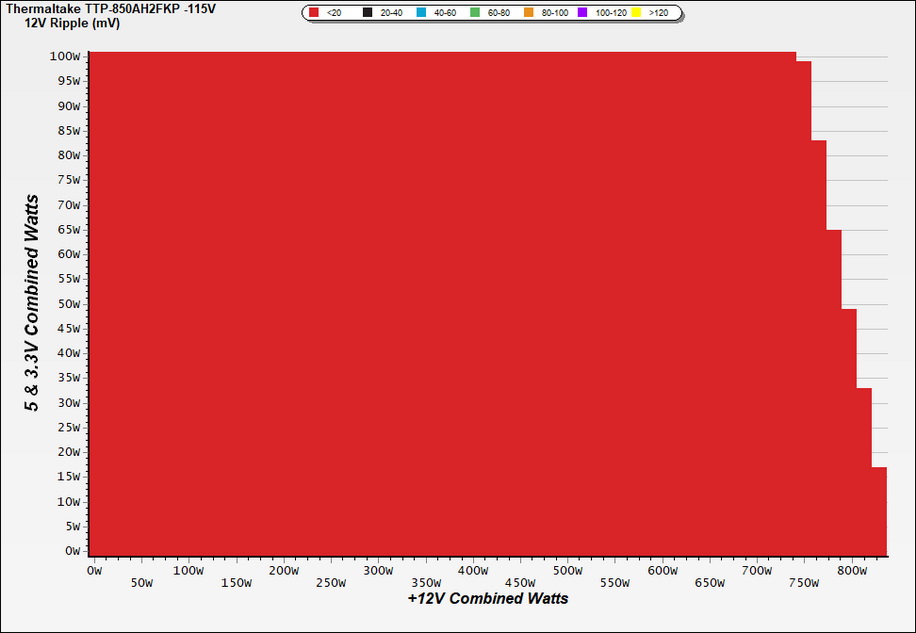
Ripple Suppression Charts
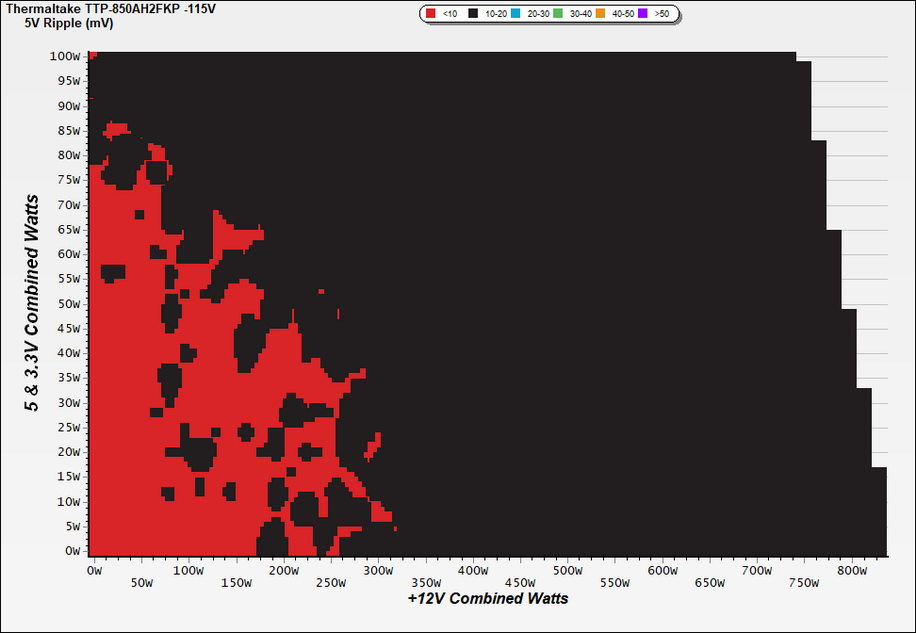
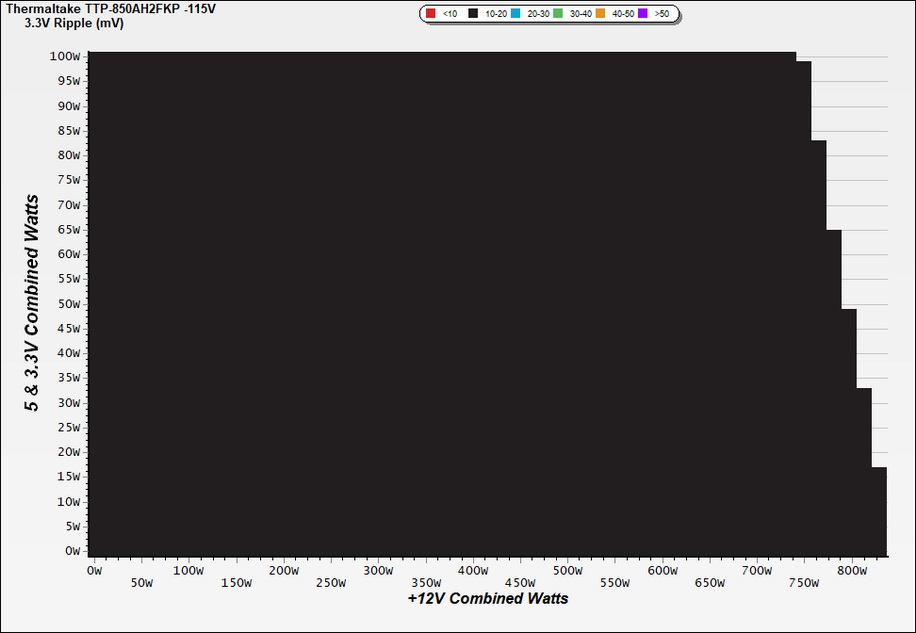
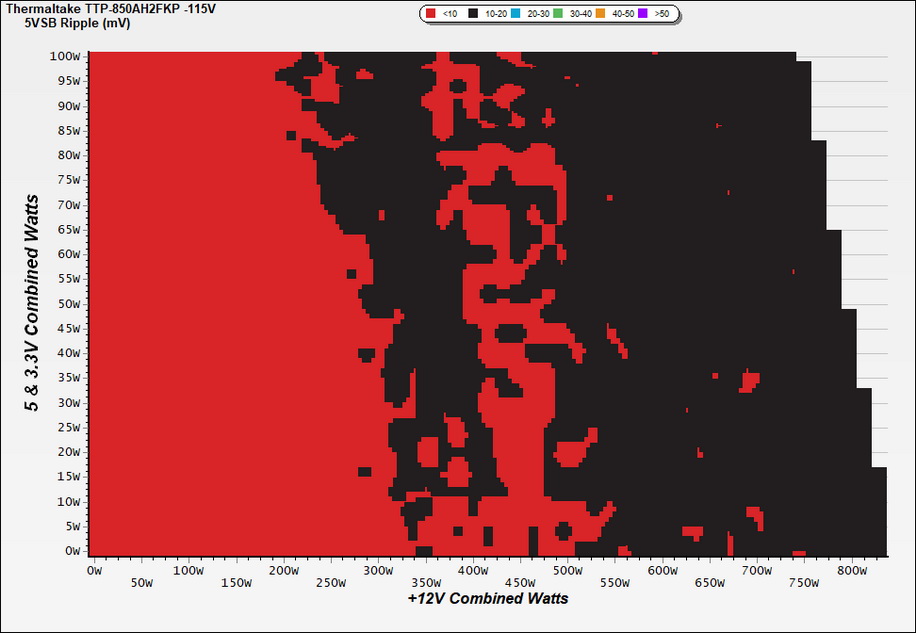
Infrared Images
We apply a half-load for 10 minutes with the PSU's top cover and cooling fan removed before taking photos with a modified FLIR E4 camera able to deliver an IR resolution of 320x240 (76,800 pixels).
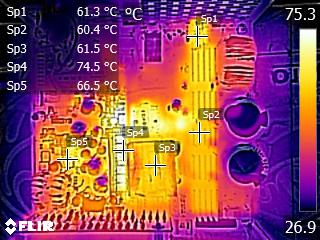
IR Images
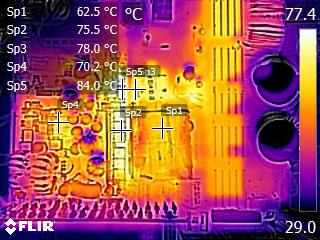
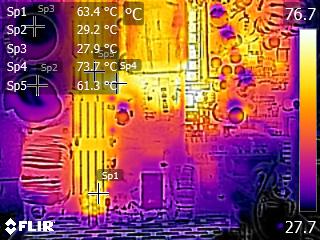

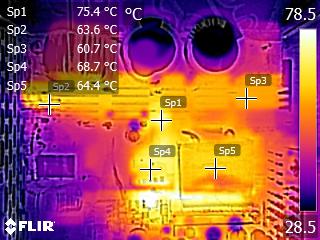
As expected, the hottest parts are the FETs that regulate the 12V rail, which does not contact a heat sink. An SB1045L SBR, which is used by 5VSB, also gets quite hot. With the fan in operation, the operating temperatures of all parts mentioned above will be notably lower since they are installed in the open.
MORE: Best Power Supplies
MORE: How We Test Power Supplies
MORE: All Power Supply Content
Current page: Protection Features, DC Power Sequencing, Cross-Load Tests and Infrared Images
Prev Page Load Regulation, Hold-Up Time, Inrush & Leakage Current, Efficiency and Noise Next Page Transient Response Tests, Timing Tests, Ripple Measurements and EMC Pre-Compliance Testing
Aris Mpitziopoulos is a contributing editor at Tom's Hardware, covering PSUs.
